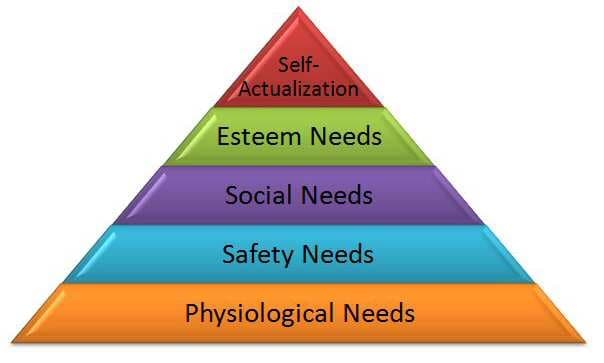Everybody must have specific areas of expertise and responsibility; for day-to-day activities, Managers or supervisors are supposed to be responsible. You can have more levels of management than other organizations. Remember! Employees or staff are always the largest group, which carries out essential and core business functions as directed or suggested by their immediate managers. You can deploy any structure that you believe is suitable for your business.
What is the business hierarchy?
A business hierarchy is an organizational structure in which staff and items are ranked according to importance. Almost every business has some form of business structure, a hierarchical framework. The hierarchy of your business depends on your business model and size. That hierarchical framework will help external and internal stakeholders know how decisions are made, who reports to whom, the level span of control, and total management levels in your business organization.
Why are there different levels in the Business Hierarchy?
The hierarchy is the first step in structuring your business and organization. While developing the hierarchy, you are supposed to define each employee’s role, the chain of command among managers and subordinates, a higher level of management, and a lower management level. You better make it in the form of a flow chart. Sometimes, it is called an organizational chart.
I suggest you consider three to four levels of hierarchy for your business; again, the number of levels depends on your business size and business model. I have seen that three to four levels of hierarchy are widespread in most organizations.
If you have started or own the business, you can be its chairman or executive. You will oversee all business-related activities and manage the financial affairs of all stakeholders.
Hierarchy in business organization
What is the level of the hierarchy?
The concept of business-level hierarchy denotes the planning and division of tasks among the individuals within an organization according to their power, position, status, and functions. A hierarchy is somewhat of a system or arrangement in which employees are tiered directly above others, conferring authority, status, or power. The company’s hierarchical structures clarify the different functions, management, control, and reporting lines horizontally.
Do you know why structure is so crucial for your business?
An appropriate and maturely established structure can effectively aid your business in many ways. A developed business structure may help employees have a clear line of accountability and responsibility. With a clearly defined business structure, each employee can better focus on various tasks that managers assign to them.
Business hierarchy of needs
Business or Maslow’s hierarchy presents five needs that managers can use to understand employees’ motivation better, which leads to high productivity and job satisfaction.
- safety needs (job security)
- physiological needs (food and clothing),
- social needs (friendship)
- self-esteem
- self-actualization. This hierarchy addresses address them.

Does everybody know the hierarchy or structure in the workplace?
Your staff may not work effectively until they know to whom they are to report and get directions from whom. If you have a clear structure for your business, don’t forget to share it with each employee. An updated organizational flow chart, known as an organogram, can be helpful for this purpose. This chart must be effortlessly reachable by almost all employees, even at the time of joining.
As I discussed in the upper section, the levels of hierarchy in business depend on the business model. Before starting your new business, you can consider many forms of business. Now, I can share the significant forms of business, which will help you decide on the structure and hierarchical levels.
The most prevalent business classifications are corporations, limited liability companies (LLC), partnerships, limited liability partnerships (LLP), and sole proprietorships or DAB (doing business as). All business types have dissimilar tax-related consequences, so you must be wise and vigilant before starting any business form close to your business goals and needs.
Do you know about business or organizational organograms?
A hierarchical organizational chart or organogram (flow chart/diagram) is helpful to make all the stakeholders aware of how your organizational system works. The reporting relationship can also be described through the connecting lines in the organogram. In most organizations, three management levels are commonly found: top-level management is responsible for all the decisions related to the entire organization, for instance, which product to market and which marketers need to address. Second, the middle management is responsible for implementing all the decisions made by the top management. The third level is the frontline management, which is accountable for implementing all the decisions. The frontline management and their staff interact with the customers directly. Now, we can discuss all levels of management in a bit more detail.
- Top-level management
- Middle-level management
- Lower-level management
Top Management
Generally, the president, board of directors, and CEO fall under top-level management. These individuals are accountable for controlling and overseeing all organizational decisions. Top-level management establishes the goals to achieve, organizational policies and procedures, and decides other level management directions. Moreover, top-level management is responsible for mobilizing the external environment’s resources, starting environment, human resources, material required, and machinery when needed. The top-level management is held accountable to the business shareholders.
Middle-level managers
The manager who works in the branch manager positions, floor manager, general manager, and departmental manager falls under middle-level management. They are answerable to the top-level management for their department and branch functions. Middle-level management’s role is to execute management’s-cording to top-level management’s organizational polimanagement’sectives. They also disseminate the decisions and policies to the lower management and facilitate them to perform better.
Low-level managers
Supervisofrontlineline managers, section leads, and supervisor-type individuals come under low-level management. They are responsible for assigning tasks to the related employees, supervising them in daily activities, and ensuring quality and quantity in processes and production. Low-level management also provides career planning, motivation, and performance feedback guidelines.
Are youfrontlineine manager?
Tfrontlineine or first-line managers are used simultaneously for the employees responsible and accountable for managing the tasks, converting the prospects into real customers for the organization, and producing the products or services. They are also known as core employees.
What is your style of management?
Remember the various management styles, namely the autocratic style, democratic style, and free rein style. An authoritarian management style is beneficial when staff is not fully aware of the products, customers, and processes or is new to the organization. The democratic management style is functional when employees’ inputs are considered in decision-making. The third management style is essential when employees are highly experienced and, qualified, and familiar with the customers, products, processes, and the market.
Which organizational structure should you follow?
You should consider the structure that suits your business model. Organizational structures direct the hierarchy levels for businesses to improve operations effectively and efficiently. There are many functional, divisional, and matrix business structures, and organizations can adapt according to the business dynamics. For instance, a functional structure is commonly used by several organizations. In this structure, top executives remain at the top, looking after various heads of the different organizational functions such as production, finance, marketing, HR, Sales, etc. All the function heads are supposed to report to the top executives.
How does a function hierarchy help create a great company?
You must not rely on any structure because no single universal organizational structure may fit all business forms. Each organization has different business goals, products, processes, and an entrepreneurial mindset. YoIt woItbe best if youubuiyou built thechy according to your employees’ roles in the functional business structure. The femployees’structure makes all the employees in the same function exert more effort for common functional objectives. For instance, the marketing, sales, and HR funemployeesll exert twill heir efforts toward their common goals respecstructure is beneficial when you have few products to functions’us, you are not required to copy any structure for your new business because it will change as your business grows. Your business’s life cycle will start with the entrepreneurial stage and continue through the formulation and growth stages.
You can follow the divisional structure.
I can suggest the divisional structure for sundamenfundamental if you have more than four to five products of different natures. This structure provides decentralized decision-making, and individuals are grouped into by-products and geographical areas. For instance, one country as a market can be divided into regions such as the north, south, or central regions. You can also divide based on the product, such as cosmetics, edible, or toiletry items, as these products have different natures.
Matrix Organizational Structure can be adopted.
You are supposed to offer both products and services to customers. This structure is more common in hotels, hospitals, and the educational industry. It carries the features of both divisional and functional structures. You should bear in mind that the matrix structure provides the highest decentralization level to each team that works under it. All the teams under the matrix structure work for the joint project.
What managerial skills do you need at any hierarchical level in business?
Nevertheless, all employees at any level or managerial positions must possess smooth business operations—human skills, technical skills, and Conceptual Skills.
CONCEPTUAL SKILLS for Top Management?
Have you ever considered the skills you must use to run your business or work in any organization? If you are at the top-level management, you must possess more conceptual skills than other skills, such as technical or human skills. Conceptual skills mean your ability or capacity to look at the entire organizational activities and decisions. Conceptual skills are essential for top-level management because they need to look at “the big picture” to accomplish the business goals. Although middle and low-level management also requires conceptual skills, top executives often capitalize” them. ”
HUMAN SKILLS are required more!
Do you interact with others in life? Absolutely YES!
Do you know that human skills are required everywhere, whether you do a job, business, or even at home? The most critical part of human skills is communication. How strong you are in communication, either verbal or non-verbal communication. Understanding body language is an exciting and complex part of human skills. Human skills refer to your ability to understand and interact with others effectively. Human skills become more critical when you are in the middle management of any organization. This is because when your role is between the top-level management and low-level management, you must interact with both. Hence, you have to interact with top management while receiving the plans, orders, directions, and instructions; then, you must interact with lower-level management to implement the strategies and get things done. That is why you must have more human skills than skills like conceptual and technical. You also need conceptual skills with less magnitude, although human skills are required at all management levels.
TECHNICAL SKILL
Are you technically strong? Do you know when you will need technical skills the most? Let me explain what will help you. The technical skills demonstrate proficiency in product or service quality and quality. Many activities may fall under technical activities, requiring skills like anything. For instance, making business presentations or proposals, creating a budget, conducting an audit, monitoring, or evaluating the performance will require more technical skills than human, conceptual, or other skills. The low-level management or first-line managers must take care of the organizational operations and need technical skills.
CONCLUSION
Before you look into a business-level hierarchy, every manager is required to comprehend the bottom-line message that a hierarchy of any business would be a tool to structure any business enterprise or an organization that surely carries the diverse levels of authorities where top-level management controls and manages the lower-level management or staff. The flow of communication starts from the top-level to bottom-level management and then returns as feedback.

